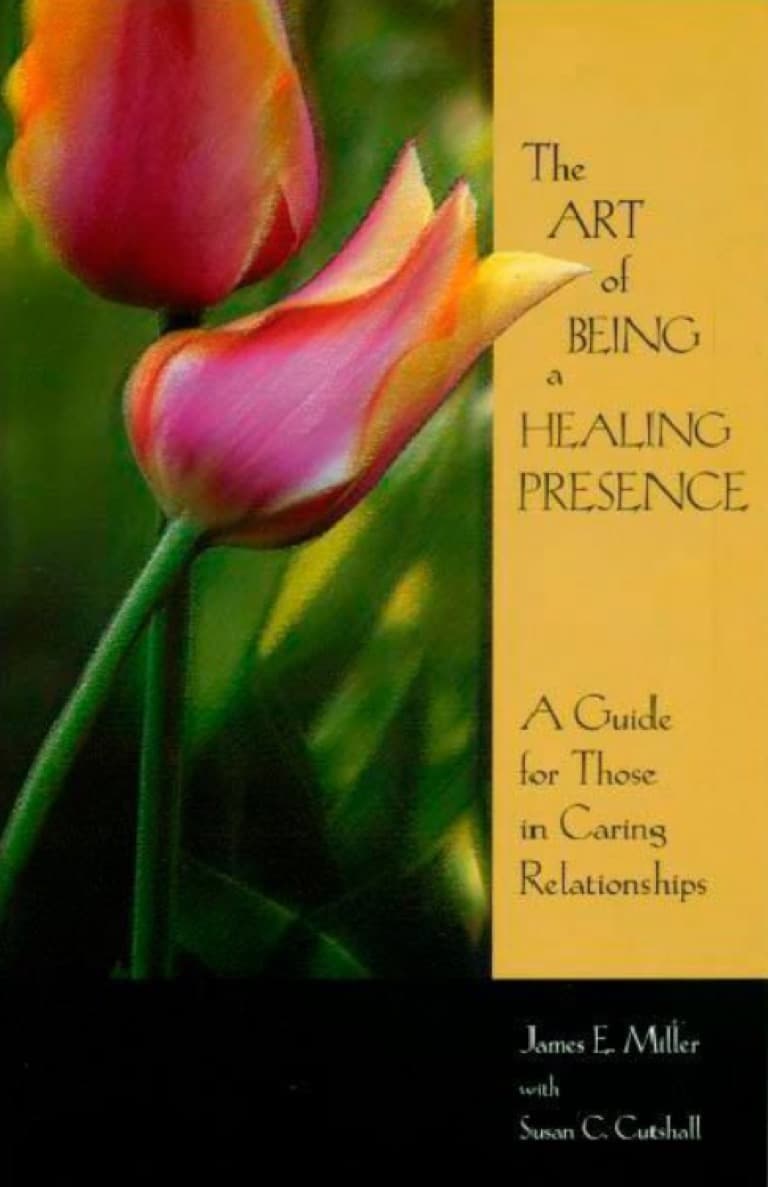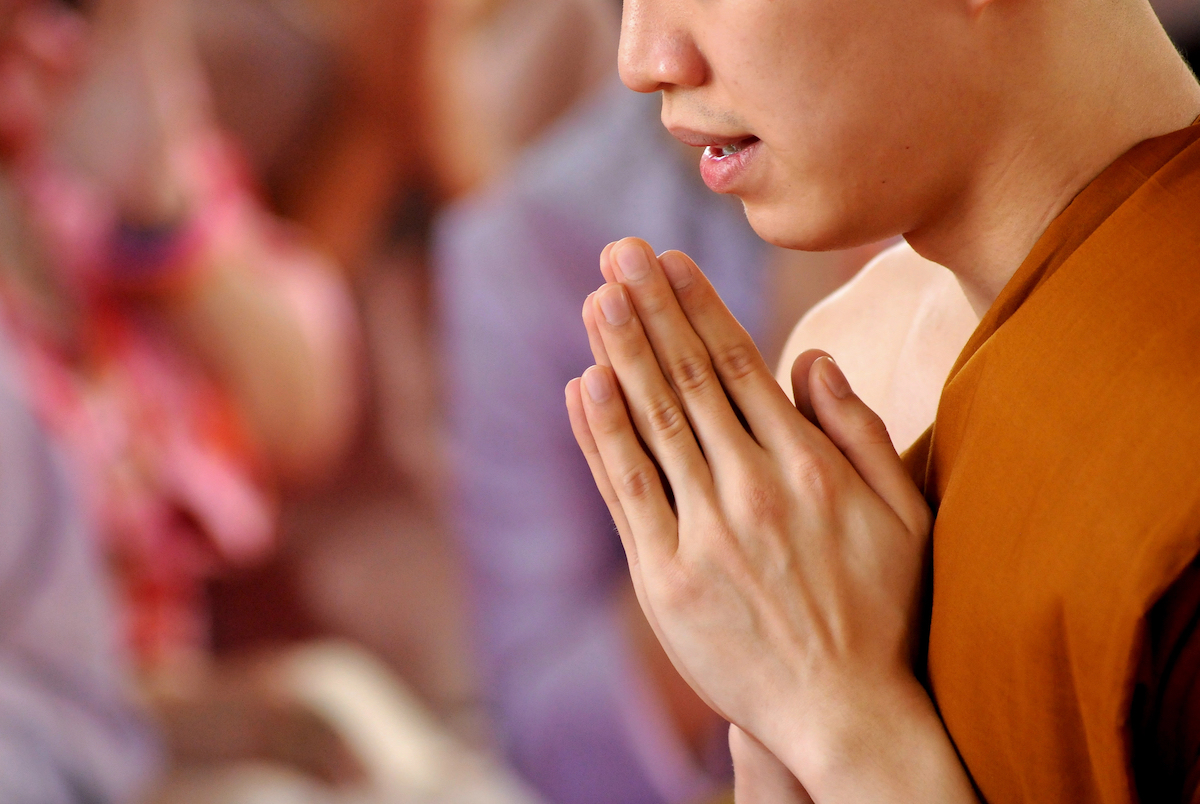Do you have a friend or a loved one who’s going through a difficult time?
Healing presence is your natural ability to help someone when they need it the most. You may say very little. You may do very little. Yet, you can make all the difference by holding a space where the other can be seen and heard without reservation.
So argue James E. Miller and Susan C. Cutshall in their altogether indispensable The Art of Being a Healing Presence. This is a book of rare beauty and benevolence, one that shows you how to really see another person and recognize what brings you together, rather than what drives you apart. Written for professional and lay caregivers, it can be of help to anyone who wants to be present with others in a way that is kind and empathetic.

FREE Self-Test: How Spiritual Are You?
What Is Healing Presence?
Healing presence is the condition of being consciously and compassionately in the present moment with another or with others, believing in and affirming their potential for wholeness, wherever they are in life.
How to Be a Healing Presence (7 Mindful Ways)
If you want to learn how to be a healing presence, here are seven mindful ways to do it.
1. Listening
Perhaps you’ve heard this popular advice: “There are three things you can do to help someone. The first is to listen. The second is to listen. The third is to listen some more.” When you listen to others, you value them. You quietly and clearly communicate that you care. Real listening, the kind that occurs at a level well beyond the polite professional and social norm, requires concentration, focus and effort. When you listen in this way, the other will feel affirmed and validated, perhaps freed and empowered.
2. Holding
You can hold others mentally as you focus your thoughts on them throughout the day. You can hold them spiritually as you make them a part of your daily disciplines, or as you reach out to them soul-to-soul. You may physically hold the other person by taking a hand, touching an arm or shoulder, or perhaps even offering an embrace. Your sensitivity is crucial here. Some people aren’t ready or willing to be touched. Ask them first. Or extend your touch in such a way they can easily and comfortably withdraw if they wish.
3. Being Silent

Sitting in silence with others can be deeply healing. You’re not waiting for their next words. You’re simply going deeply into the moment together, united by this quiet you share. As you open to it, you can listen for what this rich silence is saying, to each of you and to both of you.
4. Being in Your Body
As you’re with another, you can bring attention to your entire physical being. What is your whole body telling you? What sensations do you have in your chest, your throat, your neck? What do your insides tell you? Developing a reliable connection with your body opens intuitive channels for receiving valuable information well beyond what you can pick up with your eyes and ears.
5. Being Still
Quieting your body helps to keep focus on them. You do this by looking directly at them rather than all around them, by sitting still rather than fidgeting, by being aware of any nervous habits you have that might be distracting.
6. Speaking from the Heart
Healing presence involves very little speaking for the one who is simply present. “What should I say?” is the most common question for someone who’s new at this, yet what you say will have far less impact than how you listen. Still, it often helps to speak. You can respond honestly to their questions, including saying “I don’t know” if that’s the case. You don’t have to know. Despite their questions, others don’t expect you to know. Your presence itself validates their feelings, their situation, their process. Occasionally, you might reveal parts of yourself and your own story. Always the purpose of your talk is to invite their talk.
7. Being Receptive

As you still yourself in the other’s presence, you wait patiently and open-mindedly for what will come, without trying to control the results. You accept willingly what the other has to say. You embrace freely and gratefully what this experience offers.
Healing Presence Examples
All of the ways mentioned above can be combined in different ways for physical, emotional, and spiritual healing presence.
1. Physical Healing Presence
An aide bathes an elderly woman who lies in a nursing home bed. The woman seems alert but cannot speak. With great care the aide gives the woman a bath and shampoos her hair, talking softly, moving gently. Tasks complete, the aide sits for a few moments beside the woman’s bed, holding and stroking her hand. That is healing presence.
Related book: Mindful Caregiver by Nancy L. Kriseman.
2. Emotional Healing Presence
A volunteer for his congregation visits a man whose wife has Alzheimer’s Disease. The husband talks about the stress of his full-time caregiving responsibilities. He voices his sadness, anger and loneliness, as well as his guilt for having some of these feelings.
The volunteer listens thoughtfully, nodding from time to time. When he finally speaks, he acknowledges the husband’s feelings, then reports what he is witnessing: a loving husband who provides excellent care in very trying circumstances. Tears of relief and appreciation form in the husband’s eyes as the two sit quietly. That is healing presence.
Related book: Being with the Dying by Joan Halifax.
3. Spiritual Healing Presence
A hospice social worker enters the bedroom of a man who lies dying, surrounded by anxious family members. She kneels beside his bed, takes his hand and asks, “Would you like me to tell you what I see?”
With his consent, she tells him she senses his struggle. She sees also that his disease is becoming larger than his ability to fight it. With direct and tender words, she speaks the truth of his approaching death.
Her quiet honesty disarms all defenses, enabling the man and his family to take a step beyond their fear and begin facing the pain of their approaching losses. She continues to kneel there as emotion fills the room. That is healing presence.
Related book: Five Invitations by Frank Ostaseski.
In Conclusion
Be kind to other people, recognize your common humanity, learn to be with others in a way that is loving and understanding — these are the messages that I heard while reading this book, a book that towers above the rest in its gentle invitation to look beyond yourself.

FREE mindfulness resources for stress relief
Couple The Art of Being a Healing Presence with Carl Rogers on empathy as a way of being.

I’m a freelance writer and mindfulness advocate behind this blog. I started my meditation practice in 2014, and in 2017 I launched this website to share what I learn with others. Here are the three things you can do here:
1. Schedule a free consult if you want to learn Buddhist meditation.
2. Download free mindfulness resources for stress relief
3. Join Patreon for exclusive content and community meetings.









